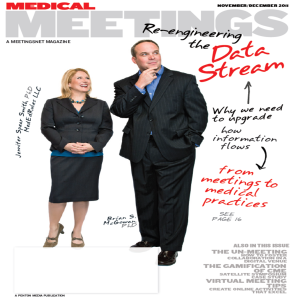MANUSCRIPT: Trends in Physician Referrals in the United States, 1999-2009
RESOURCE: How Doctors Could Rescue Health Care by Arnold Relman | The New York Review of Books
RESOURCE: Lower Costs and Better Care for Neediest Patients : The New Yorker
RESOURCE: Platform helps patients understand doctors’ explanations | Springwise
RESOURCE: The blow-by-blow reporting on the IOM's Learning Healthcare System simulcast
CLASSIC POST: Re-engineering the Data Stream from Meetings to Medical Practices
Here is a brief excerpt from our latest Medical Meetings cover story:

For some in the medical community, the frustrations and the inadequacies of the CME system described above are glaring, and many have begun to engineer their own personal workarounds. But homegrown efforts and small peripheral technology solutions aren’t going to fix the inefficiencies and failures of the current knowledge stream.
While “need” and “education” are defined locally, an efficient flow of new medical information into practice requires a re-engineering of the very system of data collection, review, publishing, and subsequent dissemination and education. This means the central players in the medical community—the societies, associations, research institutions, and educational providers—must evolve as well, embracing the parallel movements of rapid-learning healthcare systems and social learning.
